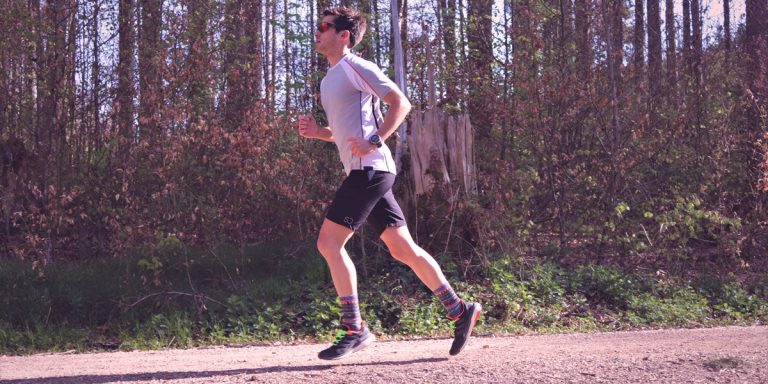How Can I Improve My Running Skills?
To improve your running skills, focus on building endurance through interval training and consistent practice. Running is an excellent form of physical activity that can improve cardiovascular health, boost endurance, and lower stress levels.
However, improving running skills requires more than just lacing up your shoes and hitting the pavement. Whether you are a beginner or a seasoned runner, there are several steps you can take to enhance your performance. One way to improve your running skills is to focus on endurance-building exercises such as interval training, hill repeats, and tempo runs.
Additionally, incorporating strength training exercises and stretching into your routine can help reduce the risk of injury and enhance overall performance. Consistent practice, proper nutrition, and staying hydrated are also key factors in improving your running skills. By following these tips, you can take your running skills to the next level and achieve your personal best.
Setting Goals
Setting goals is a critical step in improving your running skills. Without specific goals, you won’t know what you’re working towards and it will be difficult to track your progress. By assessing your current level of fitness, defining achievable targets, and creating a plan for how to reach those targets, you can establish a clear path towards improving your running skills.
Assessing Current Level Of Fitness
The first step in setting goals for improving your running skills is to assess your current level of fitness. This includes evaluating your overall health and fitness level, as well as your running ability. Assessing your current level of fitness can help you identify areas where you need to improve, as well as strengths that you can build upon.
You can assess your fitness level by tracking your running times, heart rate, and other health metrics. You can also consult with a doctor or personal trainer for a professional assessment of your overall health and fitness.
Defining Achievable Targets
Once you’ve assessed your current level of fitness, the next step is to define achievable targets. Your targets should be specific, measurable, and realistic, so that you can track your progress and stay motivated. For example, if you’re currently running a 10-minute mile, you might set a goal to run a 9-minute mile within a certain timeframe.
When defining your targets, consider factors such as your current fitness level, your schedule, and any other commitments you have. You should also keep in mind the importance of rest and recovery, and avoid setting goals that are too ambitious or unrealistic.
By setting achievable targets, you can create a sense of accomplishment as you reach each goal. This can help keep you motivated and focused on improving your running skills.
In conclusion, setting goals is an essential part of improving your running skills. By assessing your current level of fitness, defining achievable targets, and creating a plan for how to reach those targets, you can establish a clear path towards success. With dedication and hard work, you’ll be well on your way to becoming a stronger, more skilled runner.
:upscale()/2020/10/08/973/n/1922729/tmp_Xqh87p_4d76a5c80d0fd4bd_GettyImages-1277598885.jpg)
Credit: www.popsugar.com
Form And Technique
When it comes to running, having proper form and technique isn’t just about looking good on the track or trail. It’s also crucial for preventing injuries and improving your speed and endurance. By focusing on your form and technique, you can become a more efficient and effective runner.
Importance Of Form And Technique
Improper form and technique can lead to a host of issues, from blisters to joint pain to muscle strains. When your body isn’t moving efficiently and effectively, you’re more prone to injury and fatigue, which can limit your running performance. Proper form and technique, on the other hand, can help you run faster, more efficiently, and with less pain.
Exercises To Improve Technique
If you’re looking to improve your running form and technique, there are a few exercises you can try.
| Exercise | Description |
|---|---|
| Single-Leg Squats | Stand on one leg, and lower your body until your thigh is parallel to the ground. Keep your knee directly above your ankle, and raise back up to standing. Repeat on the other leg. |
| Butt Kicks | While running in place, try to kick your heels back up towards your butt. This will help improve your stride rate and knee lift. |
| High Knees | While running in place, lift your knees as high as you can towards your chest. This will help improve your stride length and knee drive. |
| Planks | Hold a plank position, keeping your body in a straight line from head to heels. This will help improve your core strength, which can aid in maintaining good running posture. |
Remember, improving your running form and technique takes time and practice. Be patient with yourself, and focus on making small improvements each day. With consistent effort, you’ll be running with better form and technique in no time.
Training Programs
Training programs are an essential part of improving your running skills. With a well-planned training program, you can increase your endurance, speed, and strength, allowing you to reach your running goals. Here, we’ll break down three crucial training program aspects that can help you improve your running skills:
Creating A Training Plan
Before you start any training program, it’s essential to create a plan. This plan should consider your current fitness level, goals, and schedule. With these factors in mind, you can create a running program that is realistic and achievable.
To create a training plan, start by assessing your current fitness level. This can help you determine where to begin and what kind of physical activity is safe for you. From there, set specific, measurable, and realistic goals to motivate you and track your progress. With your fitness level and goals in mind, you can then create a schedule that includes a mix of running workouts, cross-training, and rest days.
Interval Training
Interval training is an effective way to improve your running skills, particularly your speed and endurance. This type of training involves alternating short, intense bursts of exercise with recovery periods. For example, you might run for one minute at your maximum speed, followed by two minutes of walking or jogging to recover.
Interval training can be done on a treadmill or outdoors. It’s recommended to start with shorter intervals and gradually increase the length and intensity as you progress. As with any training program, it’s essential to warm up, cool down, and stretch correctly to reduce the risk of injury.
Strength Training
Strength training can help you build the muscle and endurance necessary to improve your running skills. Resistance exercises like squats, lunges, and push-ups can strengthen your legs, core, and upper body, making it easier to maintain proper form and technique while running.
Aim to include two to three strength training sessions per week in your training program. It’s essential to include a variety of exercises that target different muscle groups, and gradually increase the weight and intensity as you get stronger.

Credit: ikepod.com
Nutrition And Hydration
Improving running skills involves maintaining proper nutrition and hydration levels. Focus on consuming healthy, balanced meals with adequate protein and carbohydrates to fuel your runs. Hydrate with water and electrolyte-rich drinks to replace fluids lost during exercise and enhance endurance.
Nutrition and Hydration are critical elements to consider if you want to enhance your running skills. Despite your fitness level, it’s impossible to perform well if you don’t fuel your body with the right nutrients. In this section of the article, we’ll delve into the various aspects of Nutrition and Hydration that can help you improve your running abilities.Importance Of A Balanced Diet
A balanced diet comprises all the essential nutrients that your body requires to function optimally. Runners require carbohydrates, protein, healthy fats, vitamins, and minerals in sufficient amounts to perform at their best. Carbohydrates are the main source of energy and should account for at least 50% of your daily calorie intake. Protein aids in muscle repair and recovery, while healthy fats assist in energy production and vitamin absorption. A balanced diet not only improves your running ability, but it also boosts your general health and prevents various diseases. So, ensure you include a variety of fruits, vegetables, whole grains, lean protein, and healthy fats in your diet.When And What To Eat Before And After A Run
What, when, and how much you eat before and after a run is critical to your performance. Before a run, it’s crucial to consume a meal rich in carbohydrates at least two hours before running. This ensures that your body has enough energy to power you through the run. You can also have a snack that’s easily digestible like a banana or toast if your run is less than an hour away. After a run, consume a meal rich in both protein and carbohydrates to aid muscle repair and recovery. A good example is grilled chicken with a sweet potato. It’s also crucial to hydrate adequately before, during, and after a run.Staying Hydrated During A Run
Staying hydrated is crucial during a run. Dehydration can lead to fatigue, muscle cramps, and in severe cases, heatstroke. Ensure you hydrate adequately before a run by drinking at least 16 ounces of water or a sports drink two hours before running. During the run, drink 7-10 ounces every 10-20 minutes, depending on your body’s requirements. It’s essential to use a hydration system that’s best suited for you, whether it’s a hydration vest, a handheld bottle, or a waist belt hydration system. Hydrating adequately after the run is equally crucial for recovery. By incorporating these Nutrition and Hydration tips into your running routine, you’ll reduce your chances of injuries, improve your performance, and enjoy your running journey even more.Rest And Recovery
Improving running skills requires adequate rest and recovery to avoid injuries and improve muscle recovery time. Incorporating a balanced training plan, including rest days, massage, proper nutrition and quality sleep, helps to build endurance and overall running performance.
As a runner, it’s easy to get caught up in the euphoria of crossing the finish line or logging more miles on your running app. However, it is essential to understand the importance of rest and recovery in improving your running skills and preventing injury. Here are some key elements to keep in mind:Importance Of Rest Days
Rest days are often overlooked, but they are crucial in allowing your body to recover from the stress of running. Rest days allow time for your muscles and joints to repair and rebuild, which in turn will help you feel better during your next workout. In addition, rest days can help prevent burnout and keep you motivated in the long run. Make sure to include at least one day of rest per week in your training schedule.Recovery Techniques
Recovery techniques are another important aspect of improving your running skills. Foam rolling, massage, and stretching can help increase blood flow, reduce muscle soreness, and improve flexibility. Incorporate recovery techniques into your post-workout routine to maximize the benefits and ensure proper recovery. In addition, getting enough sleep and staying hydrated are also essential for recovery and overall performance.Injury Prevention
Injury prevention is another critical component of rest and recovery. Proper warm-ups and cool-downs, adequate hydration and nutrition, and appropriate footwear can go a long way in preventing injuries. Listen to your body and adjust your training as needed to avoid pushing yourself too hard. Remember that the goal is to improve your running skills in a safe and sustainable way. In summary, rest and recovery are crucial components of improving your running skills. By incorporating rest days, recovery techniques, and injury prevention strategies into your training, you can increase your performance and prevent burnout and injuries. Happy running!
Credit: keepingitsimple.solutions
Frequently Asked Questions On How Can I Improve My Running Skills?
How Can I Improve Myself In Running?
To improve in running, focus on increasing your mileage gradually, incorporating strength training, maintaining good form and posture, following a healthy diet, and staying consistent with your training regimen. Consider working with a coach or joining a running group to get additional support and guidance.
What Is The Best Exercise To Improve Running?
Strength training exercises, such as lunges, squats, and calf raises, are the best way to improve running. These exercises increase lower body muscles, which results in more power and less injury while running. Integrating these exercises in your training routine will enhance your running performance.
How Can I Improve My Running At Home?
To improve your running at home, you can start by setting a clear goal and creating a training plan that suits your level. Incorporate strength training exercises, vary your running route and terrain, stay hydrated, and wear proper running shoes for support and comfort.
Consistency is key, so make sure to stick to your plan and allow for rest days. Happy running!
Conclusion
To improve your running skills, it’s essential to focus on your form, set realistic goals, follow a healthy diet, and incorporate strength training into your routine. These tips, along with consistency and determination, can help you achieve your running goals.
Remember, it takes time and effort to improve, so don’t give up if progress seems slow. Keep pushing yourself, and eventually, you will see the results you desire. Happy running!





